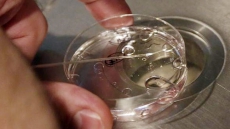Now that the summer sun is here, many people are able to go outside and enjoy the warmer weather; but many will be sheltering themselves indoors or slathering on layers of sunscreen when they do venture out.
While over exposure to the sun can contribute to skin cancer and melanoma, avoiding the sun entirely by staying indoors, covering up with protective clothing or applying excess sunscreen can be just as bad or potentially worse for a person’s health.
It’s about moderation and balance. The sun is crucial for all life on our planet. In humans, exposure to the sun is vital for production of vitamin D, which helps lower the risk of developing serious diseases such as cancer, heart disease, diabetes, multiple sclerosis and osteoporosis.
Recent research into the effects of sun exposure has shed more light on the benefits of sunshine and decreased the taboo of being out in the sun.
Between 1990 and 1992, 30,000 Swedish women aged 25-64 years old were surveyed about risk factors for malignant melanoma - the worst form of skin cancer. The study followed them for 20 years, and found that the women with the most active sun exposure habits, the highest sun exposure, were at a lower risk of death mainly from cardiovascular disease.
Compared to those with the highest sun exposure, life expectancy for women who avoided the sun was shorter by more than two years.
The lead author of the report Avoidance of sun exposure as a risk factor for major causes of death: a competing risk analysis of the Melanoma in Southern Sweden, Dr. Pelle Lindqvist, revealed that: “We found smokers in the highest sun exposure group were at a similar risk as non-smokers avoiding sun exposure, indicating avoidance of sun exposure to be a risk factor of the same magnitude as smoking. ” The research team thought that guidelines being too restrictive regarding sun exposure might do more harm than good for health.
Canada’s geographic location puts us in a similar sun exposure location to Sweden, much different than southern, high-exposure countries like Australia. However, despite the obvious difference, many Canadians whose vitamin D levels are dangerously low are following sun avoidance advice from high-exposure countries just like Australia.
12 million Canadians fall below the minimum vitamin D blood level requirements set by Health Canada and the Institute of Medicine due primarily to reduced sun exposure. Sensible, moderate sun exposure ensuring your skin does not burn is the best way to naturally increase vitamin D blood levels and lower the risk of developing diseases related to vitamin D deficiency.
In the study Sunlight: For Better or For Worse? A Review of Positive and Negative Effects of Sun Exposure, Dr. Han van der Rhee and his team reviewed 115 studies about sunlight and found that there is no unequivocal scientific proof that eliminating time spent in the sun has a beneficial effect on the human body.
The researchers claim that it’s unlikely that continuous protection during daily life contributes to our health, particularly in countries with a temperate climate, like Canada, and warns that both too much and too little sunlight may be harmful to our health.
For vitamin D production, supplements are often cited as the best way for people to get their vitamin D; however according to the same study, supplements may not provide all of the health benefits that sunshine exposure provides.
The report explains that in UV sunshine experiments on humans, in addition to vitamin D production, it was shown that sunshine can lower blood pressure and increase insulin secretion as well as aid the immune system, provide more regular sleeping patterns and regulate the formation of nitric oxide, melatonin and serotonin. None of these benefits of sunshine will come in pill form via a supplement.
Humans have always been living, working and playing in the sun — quite simply we can’t survive without it. Our bodies have evolved and adapted to need sunshine. But in these modern times, we are spending too much of our time indoors, or giving ourselves excess protection when venturing outside. It’s time we acknowledge that avoiding the sun is a risk to human health.
It’s important for Canadians to consider how they spend their time in the sun. Over exposure that allows the skin to burn can increase the risk of skin cancer, however eliminating sunshine, or covering your skin excessively, limits your body’s ability to naturally use the sun to your health advantage. For Canadians looking to increase their vitamin D levels its best to expose skin to sunshine in the spring and summer between 10:00a.m. and 2:00p.m. when the UV index is above 3. However, recently updated sun safety recommendations advise Canadians to avoid the sun if the UV index is above 3, but following this advice eliminates the opportunity for the body to naturally produce vitamin D from the sun. Common sense must prevail and it all comes down to finding balance and moderation on both sides.
Dr. Gerry Schwalfenberg M.D. is an Assistant Clinical Professor, Department of Family Practice, University of Alberta, Edmonton, AB. and also has a family medical practice.






